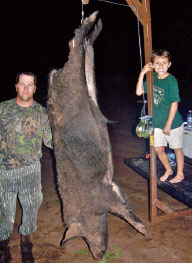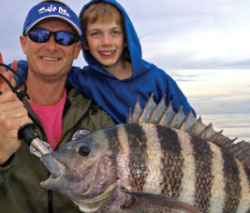July and August are usually the two months that I split my time between Tarpon fishing and getting my hunting grounds ready for deer season. On the weekends that the weather looks bad for Tarpon fishing, I am off to the hunt camp to plant food plots, move tree stands and prepare everything else necessary to be ready for the season when I can enjoy a quiet, cold morning in a tree stand. I am very fortunate to have my own property to hunt on and thus I do not have to contend with public hunting areas. Having my own place to hunt allows me to pick and chose what to plant and where to plant it. This year we decided to plant a few acres of corn, rather than the usual winter wheat or rye fields. Now I am having second thoughts about that decision. I think that next year we will go back to planting winter wheat and rye plus maybe some turnips and soybeans because our cornfields were completely destroyed in less than a week.
After working very hard to till the ground and plant (expensive) corn and fertilize, (which was even more expensive) the wild hogs found our field. We had six-foot high corn with big healthy stalks and cobs growing because of all the rain we got right after planting. Our time to sit back and feel proud of ourselves didn’t last long. Once the wild hogs found the corn, the field was devastated within three days. When I say devastated, I mean gone, wiped out, flat, not a stalk standing and the entire field smelled like a pigsty. Now we have no choice but to till it back up and re-plant with winter wheat and rye and peas, fortunately, by the time it begins to look good it will be hunting season and I will have my crosshairs on a few piggies if they dare to come near it.
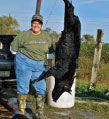
There are three types of hogs; these include free-ranging domestic stock, Eurasian wild boar and hybrids of the domestic and Eurasian boars. The Eurasian boars were brought to the United States by Hernando De Soto and Ponce de Leon in the early 1500’s. Typically what you see is a feral hog, which is a mixture of all hogs that have escaped capture. It is rare to find a Eurasian boar that has not bred with a domestic or feral hog here in Florida or Georgia. I consider all of them to be wild hogs. They can be found in every county of Florida and in at least 35 other states, including some provinces in Canada. Florida has the second largest hog population with only Texas having more. There are more than 2 million wild hogs in the southeastern United States and this population is growing fast.
The hog’s diet consists of; well let’s just say it is easier to list what they don’t eat rather than what they will eat. They are opportunistic eaters and will eat a variety of grasses, roots, leaves, seeds and fruits and even some small animals including worms, insects, crustaceans, mammals and reptiles. They sure liked my corn field. The devastation of crops in farmland areas is really getting out of hand and it is very difficult to control. Trapping or hunting is the only way to control the population growth and the devastation that wild hogs are causing and these are not able to make a significant dent in their population. I once thought that the world would eventually be taken over by fire ants, but I now suspect that the wild hog is more likely to be the last animal on earth, unless he eats himself out of h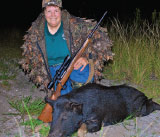 ouse and home.
ouse and home.
A wild hog becomes sexually mature by the age of 6 months old and they usually have a small first liter of 1 to 7 piglets and then larger litters from then on. The hogs usually give birth twice a year to litters with as many as a dozen piglets. Humans are the main predators of wild hogs; large carnivores such as alligators, bears and Florida panthers may be capable of preying on them, but usually not on adult hogs. Not only do the wild hogs devastate crops, destroy land and contaminate waterways, they also compete with other wild animals for their hard mast foods. When food sources dry up other game animals such as deer, turkey and squirrels suffer as a result of the piggish wild hog’s gorging on their foods. If you want to keep a healthy herd of deer on your property, you will also have to manage the population of wild hogs on your land, either trapping or hunting them. If, like me, you do not like the taste of wild hogs, there are many places that accept the meat for charity food drives. If you trap the hogs there are many hunting preserves that would love to accept the hogs that have been trapped.
Florida allows hunting for wild hogs year round 24/7. Before hunting hogs at night or on private lands it is always a good idea to 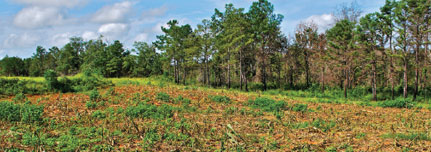 contact the Florida Wildlife Commission for regulations and permits. You can contact or find information about hog hunting and special permitting at www.myfwc.com. Many farmers would welcome a responsible hunter to help eradicate hogs on their land and would allow you to take a few hogs from their land. Never hunt private land without permission and as always know your regulations and especially be safe while hunting. Let’s go
contact the Florida Wildlife Commission for regulations and permits. You can contact or find information about hog hunting and special permitting at www.myfwc.com. Many farmers would welcome a responsible hunter to help eradicate hogs on their land and would allow you to take a few hogs from their land. Never hunt private land without permission and as always know your regulations and especially be safe while hunting. Let’s go

